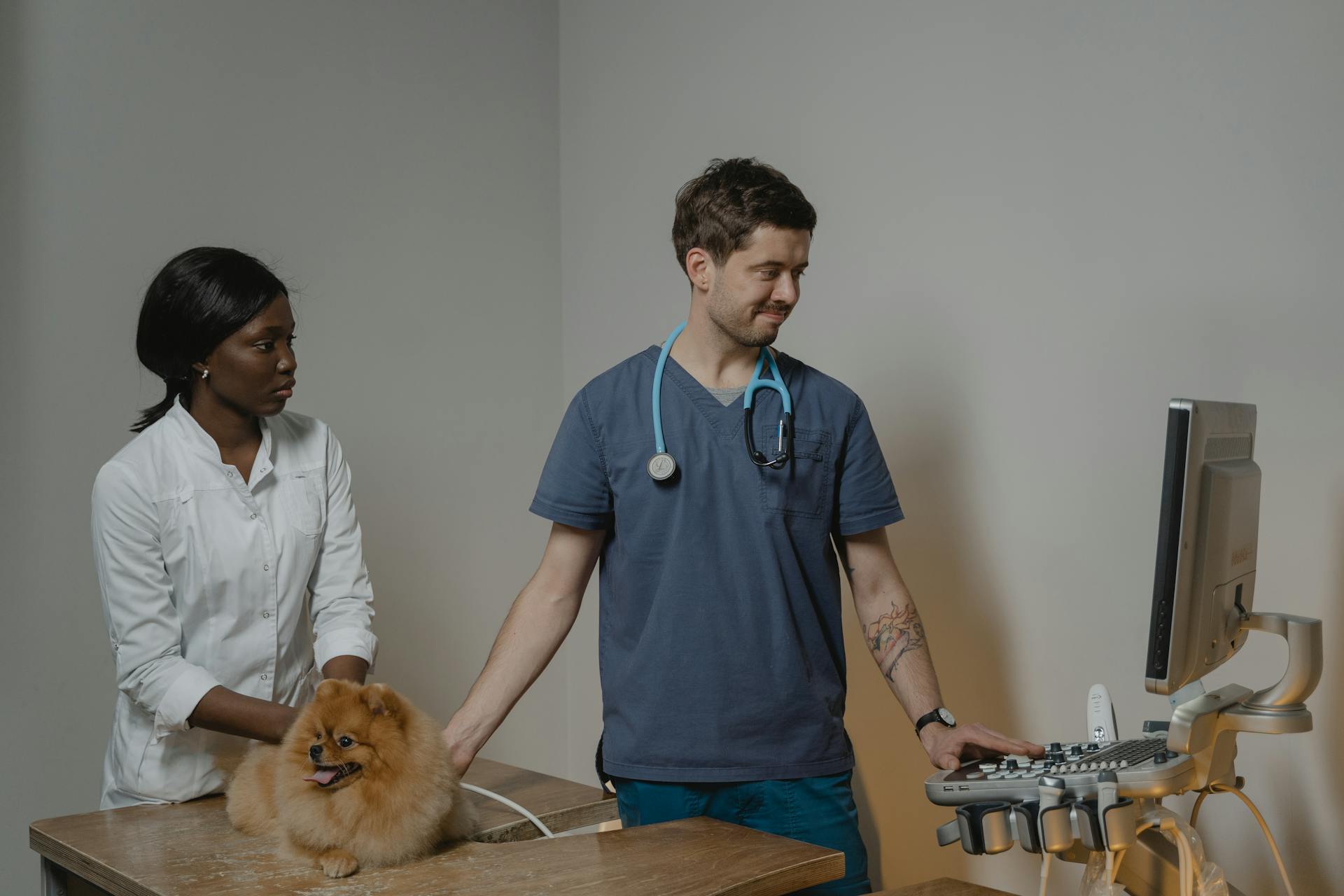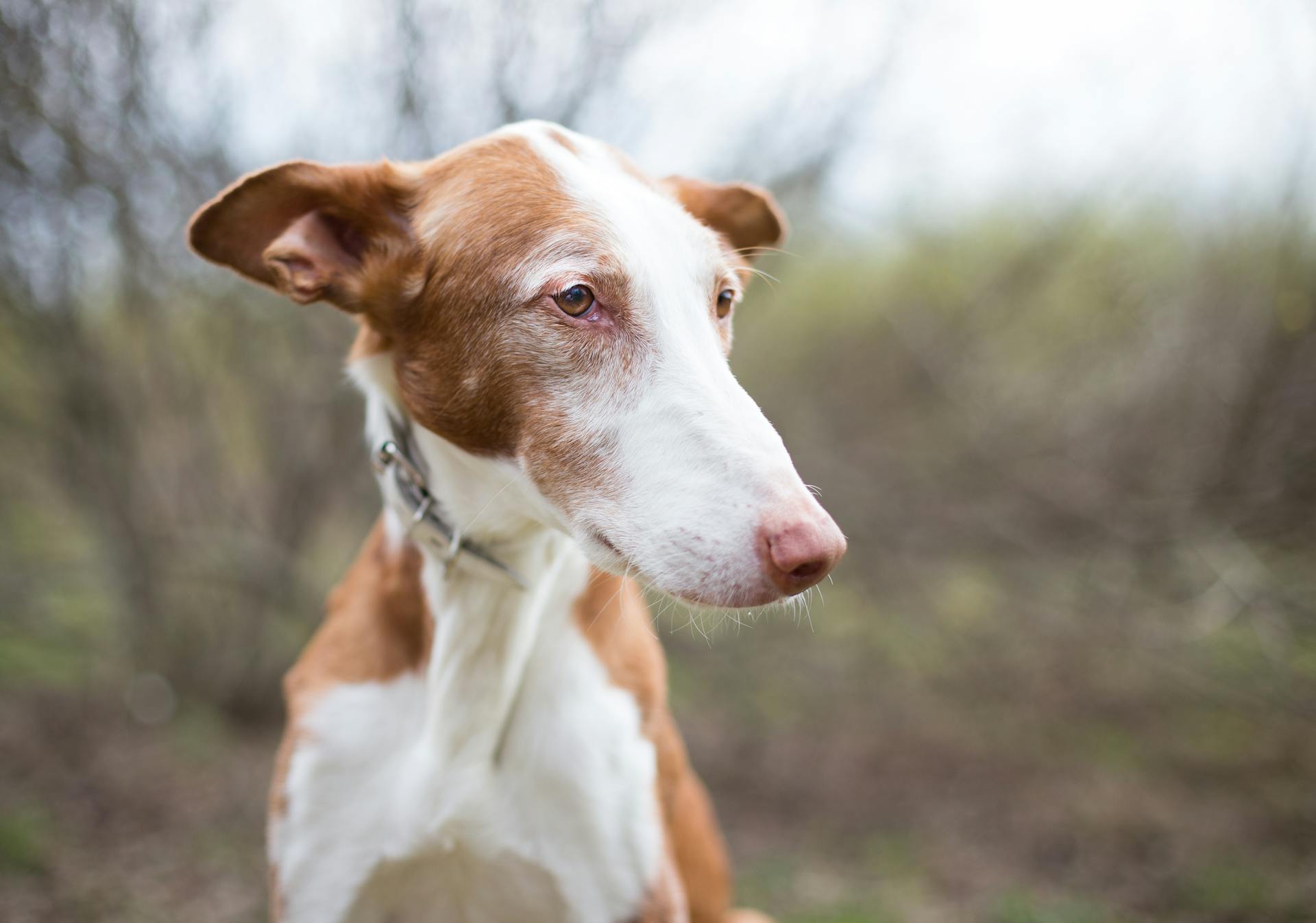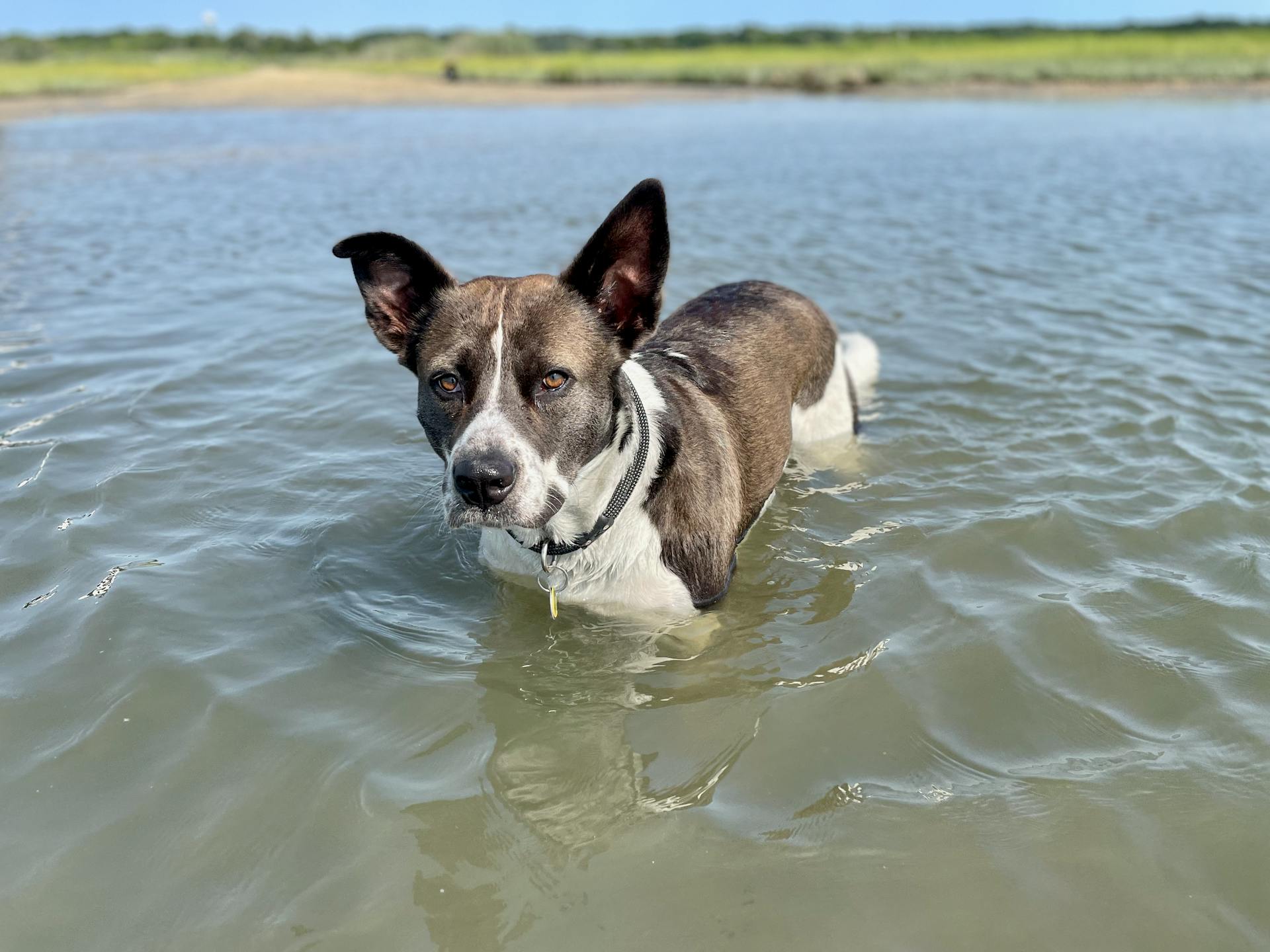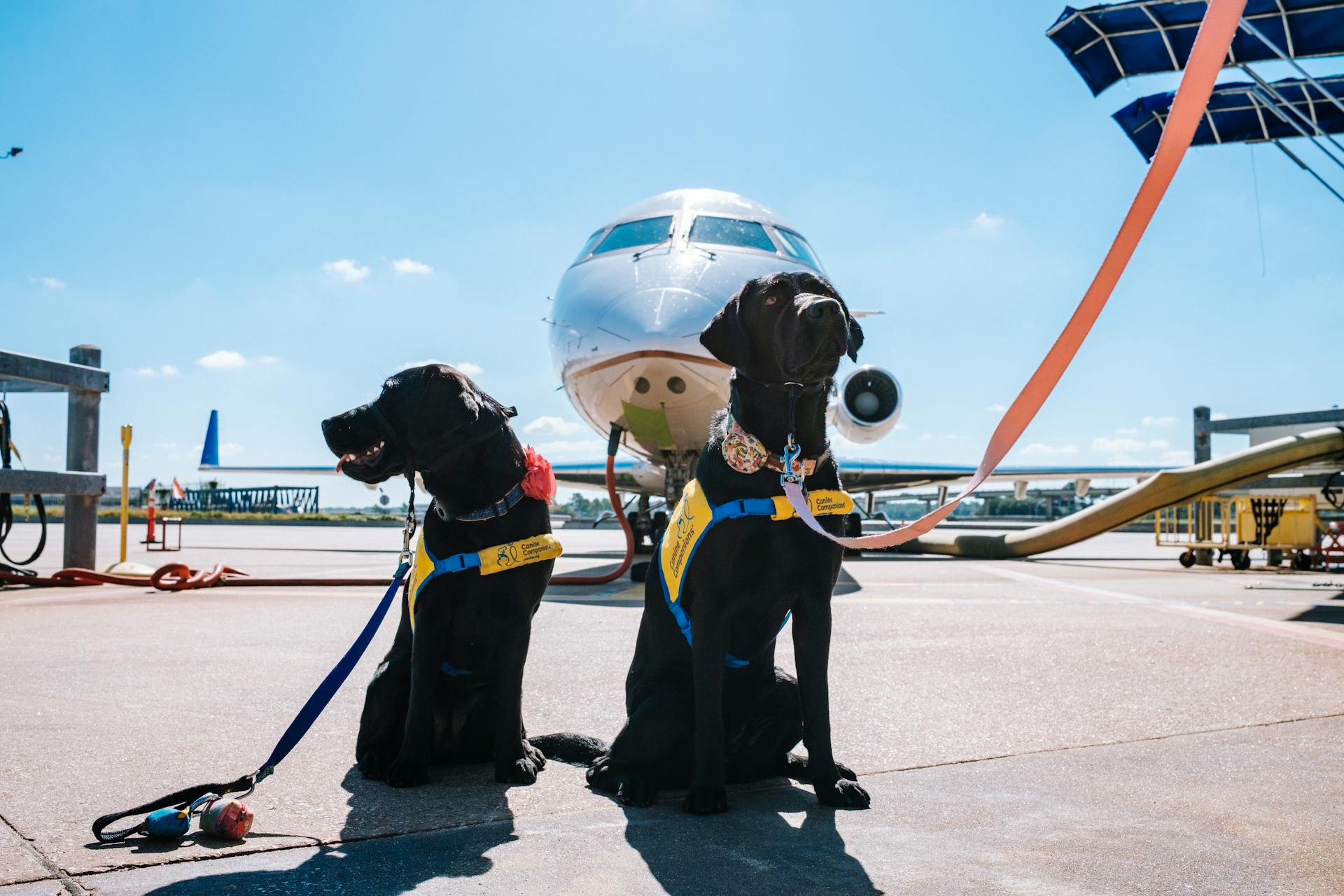
Getting a service dog can be a life-changing experience, but it's essential to know where to start. Service dogs are trained to assist individuals with disabilities, and they're not just limited to guide dogs for the visually impaired.
To qualify for a service dog, you'll need to meet specific criteria, which may include having a disability that significantly impacts your daily life. This could be a physical, emotional, or mental health condition.
Researching different types of service dogs can help you determine which one is right for you. For example, mobility assistance dogs can help with balance and walking, while emotional support dogs can provide comfort and companionship.
Service dogs can be trained by organizations or individuals, but it's crucial to find a reputable and accredited trainer to ensure your dog receives proper training.
Related reading: Emotional Support Dogs vs Service Dogs
Service Dog Programs
Service Dog Programs provide trained dogs to individuals with disabilities, such as mobility impairments, seizure disorders, and mental health conditions. These programs are often non-profit organizations that rely on donations and volunteers to operate.
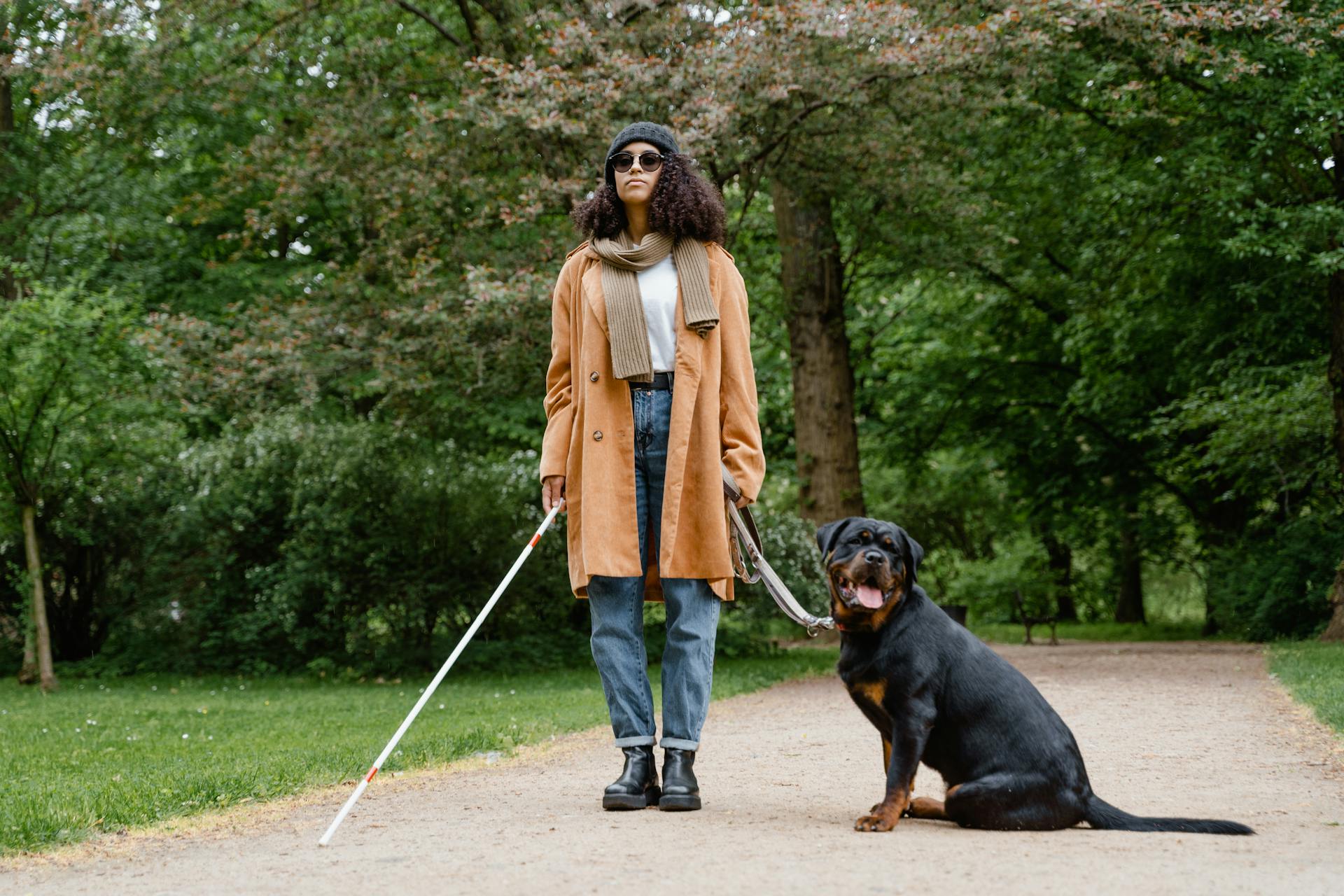
Trained service dogs can help their handlers with a range of tasks, including opening doors, picking up items, and providing physical support. They can also detect changes in their handler's body chemistry to predict and respond to medical emergencies.
Service dogs are typically trained by their handlers or by professional trainers, and the training process can take up to two years. The training covers basic obedience, advanced skills, and public access training to ensure the dog can function well in public.
Service dogs are protected under the Americans with Disabilities Act (ADA), which prohibits businesses from denying access to individuals with service animals. This means that service dogs and their handlers have the right to access public spaces, including restaurants, stores, and public transportation.
Service dog programs often have strict application processes and waiting lists, as the demand for trained service dogs is high.
A different take: Is a Public Access Test Required for Service Dogs
How to Get a Service Dog
To be eligible for a Canine Companions service dog, you must be at least 18 years old with an established, stable home life.
Service dogs are expertly trained in physical tasks to help their handler navigate the world, leading to increased independence, self-esteem, and inclusion for a person with a disability.
You'll need to demonstrate that a service dog will enhance your independence or quality of life, and you can be a person with a physical or developmental disability, an adult who is Deaf or hard of hearing, or a professional in a specific field.
The application process, including all lectures and written materials, is given in English, but Canine Companions can accommodate specific communication needs, such as providing interpreters for deaf or hard-of-hearing students.
Once you've applied, you can expect a response from Canine Companions within 2-4 weeks, although it may take longer due to a high volume of applications.
The wait time for a service dog can vary greatly, typically taking the longest for service dog candidates, as dogs with very specific temperaments are needed for these placements.
A unique perspective: Deaf Dog Training
For Veterans
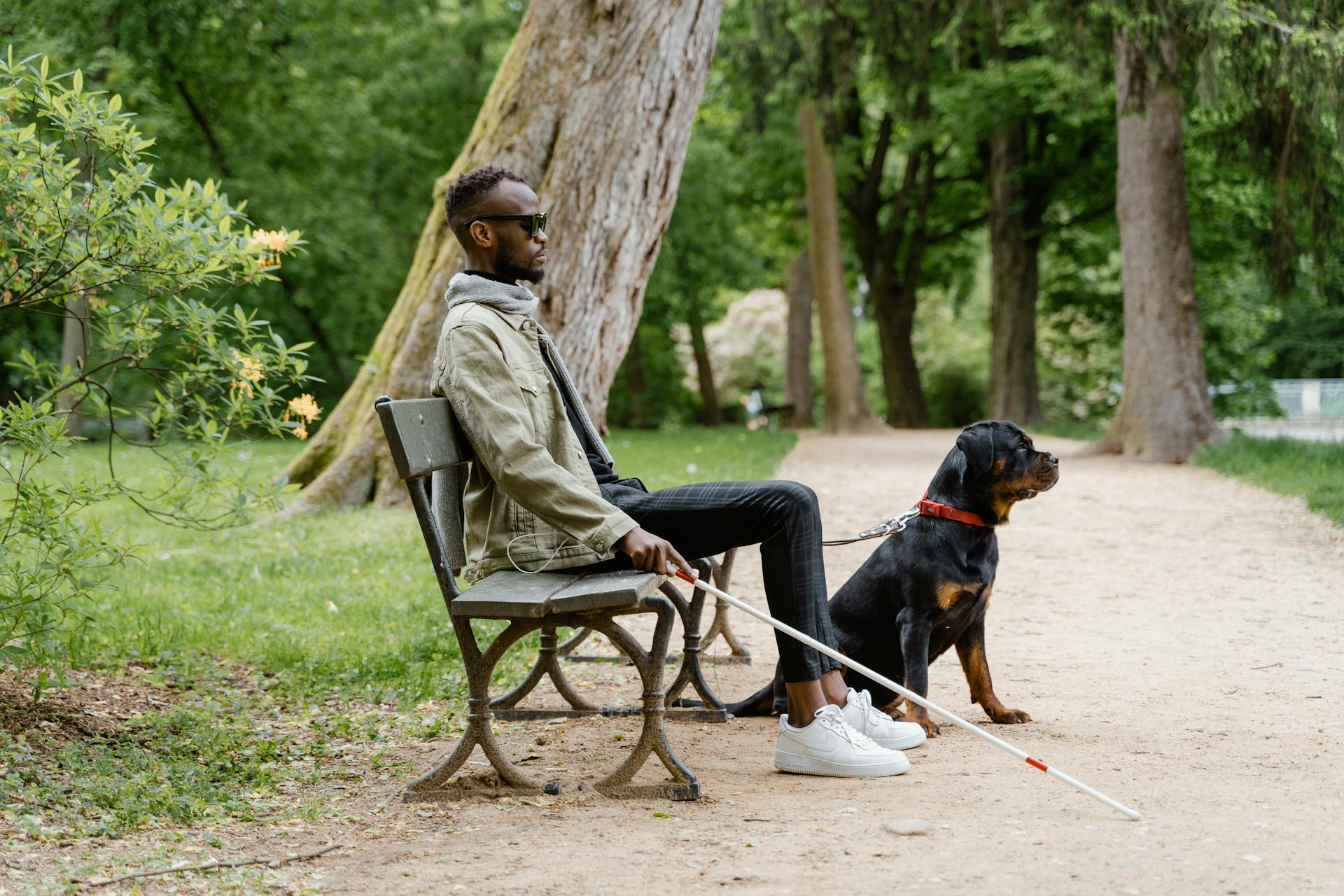
Veterans can benefit from service dogs that provide physical assistance and perform tasks to disrupt escalation of anxiety, hypervigilance, generalized fear, and PTSD symptoms.
Service dogs for veterans can be obtained through the Veterans Initiative program, which offers service dogs that provide direct assistance.
These service dogs can help veterans regain a sense of control and independence in their daily lives.
Expand your knowledge: Autism Assistance Dog
Application Process
To be eligible for a service dog, you must be at least 18 years old with an established, stable home life. Those 25 years of age and up typically are most suitable for a service dog.
The application process is comprehensive and interactive, with experienced Canine Companions staff reviewing your need and qualifications at each step.
You'll receive a response from Canine Companions within 2-4 weeks, but due to a high volume of applications, it may take longer than normally anticipated.
The wait time varies greatly between categories and based on each individual's needs, with service dog candidates typically having the longest wait.
For more insights, see: Shih Tzu 100 Years Ago
Service Dog Training and Placement

Canine Companions has been training service dogs for nearly 46 years, making it the first provider of service dogs in the nation. Each dog spends the first year-and-a-half with a volunteer puppy raiser, learning basic commands and socializing in public and private settings.
Once a dog has completed professional training, it is ready to be matched with a person with a disability. The team is matched at one of Canine Companions' regional training centers during Team Training, a two-week group class.
During Team Training, students learn to manage the service dog's behavior, direct the dog to respond to commands, and assume responsibility for maintaining the health and well-being of the dog. Canine Companions maintains ownership of the service dog, and the graduate is personally and financially responsible for the dog's care and maintenance.
Here's an interesting read: Is Lhasa Apso Good for First Time Owners
Matching and Beyond
Matching a service dog with a person with a disability is a crucial step in their partnership. The matching process typically takes place at one of Canine Companions' regional training centers during Team Training, a two-week group class.
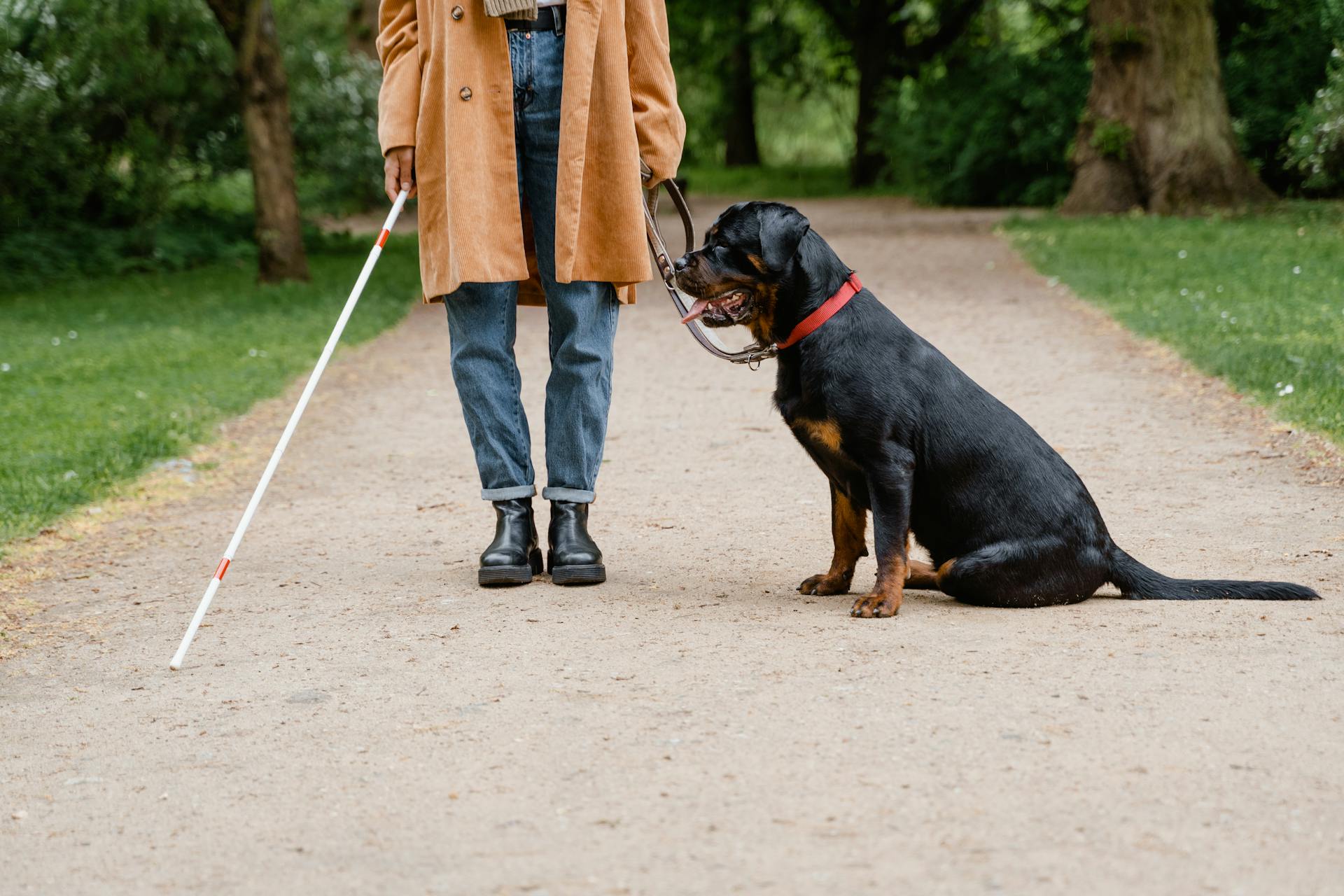
During Team Training, students learn to manage the service dog's behavior and direct the dog to respond to commands it has learned. This is a critical period in the partnership, as students begin to take on responsibility for the dog's care and well-being.
Canine Companions has a comprehensive program to ensure the ongoing success of its working teams. Graduates periodically return to campus with their dogs for public certification, workshops, seminars, and reunions.
Instructors and graduates communicate regularly through correspondence, reports, and phone and email advice. This ongoing support helps to address specific training or behavioral problems that may arise in the graduate's home and/or workplace environment.
Canine Companions maintains ownership of the service dog even after placement is made. This means that graduates are personally and financially responsible for the service dog's care and maintenance, including food and veterinary expenses.
You might like: Yorkshire Terrier Puppy Care
Training
Training is a critical part of a service dog's development, and it's a process that requires patience, dedication, and the right temperament.

Each Canine Companions dog spends the first year-and-a-half with a volunteer puppy raiser, learning basic commands and socializing in public and private settings.
Professional training at a regional training center follows, where the dog learns advanced commands that support the work of a service dog. This training can last anywhere from six to nine months.
It takes an exceptional dog to graduate as a service dog, and not every dog is suitable. All dogs must be highly proficient in the trained skills and tasks.
Canine Companions dogs receive rigorous medical and temperamental screening to ensure that every dog that graduates will be healthy, happy and appropriate in their role.
Once a dog has completed professional training, it is ready to be matched with a person with a disability.
Facility Placements With
Service dogs can be placed with professionals in various settings, including healthcare, criminal justice, and education. These placements are designed to support the work of these professionals.
Canine Companions service dogs are specially matched to meet the needs of their handlers, and they are provided at no cost to clients. This includes facility placements with professionals working in these fields.
Baylor Scott & White Health is one example of an organization that recognizes the value of service dogs in healthcare settings. They continually look for innovative ways to provide personalized health and wellness resources, including service dogs.
Service dogs are expertly trained in physical tasks to help their handler navigate the world.
Check this out: Japanese Chin Dog Health Problems
Types of
Service dogs are trained in over 40 commands and are matched with individuals with disabilities free of charge. They assist with daily tasks such as retrieving dropped items and opening doors.
These dogs are trained to enhance independence for people with disabilities. They can be matched with children, adults, and veterans.
Each Canine Companions dog spends approximately 18 months with their volunteer puppy raiser. This dedicated individual provides a loving home and foundational exercises to build the dog's character.
Adults with physical or auditory disabilities can benefit from service dogs.
Expand your knowledge: Rules for Service Dogs
Service Dog Organizations
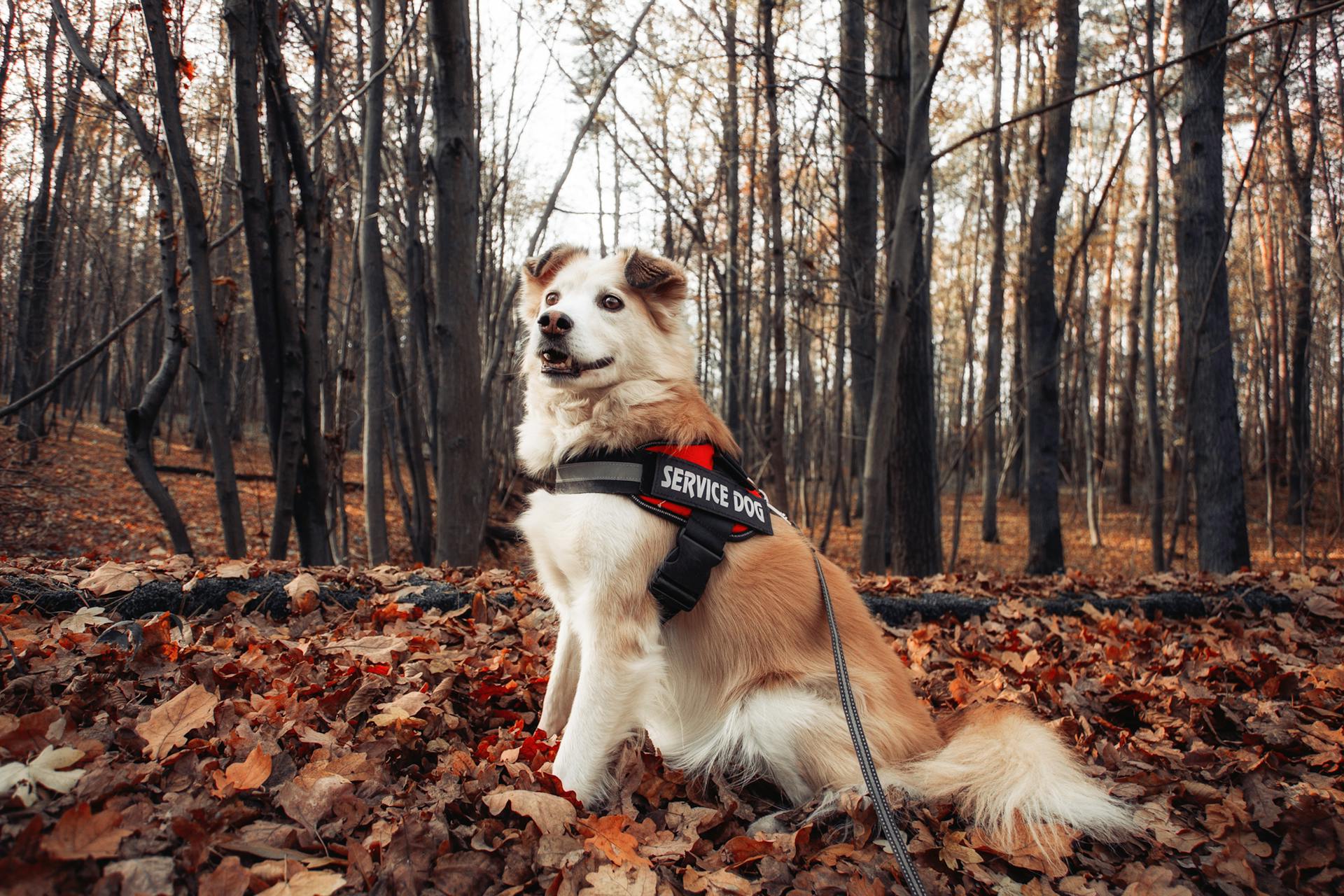
Service dog organizations play a vital role in helping individuals with disabilities by providing trained service dogs.
Canine Companions for Independence, one of the largest service dog organizations, has placed over 7,000 service dogs since its founding in 1978.
These organizations often partner with local businesses to provide training and socialization for service dogs.
Service dogs can be trained to assist individuals with a wide range of disabilities, including mobility issues, seizure disorders, and post-traumatic stress disorder.
Some organizations, like Paws With a Cause, have a long waitlist for service dog placements, often taking several years to match a dog with an individual in need.
Service dog organizations often have a rigorous selection process for both the dogs and the individuals they will serve.
A unique perspective: Psychiatric Service Dog Organizations
About Service Dogs
Service Dogs are built on a foundation of trust, formed through a strong and genuine bond between the dog and their handler. This bond is authentic and free from hidden agendas.
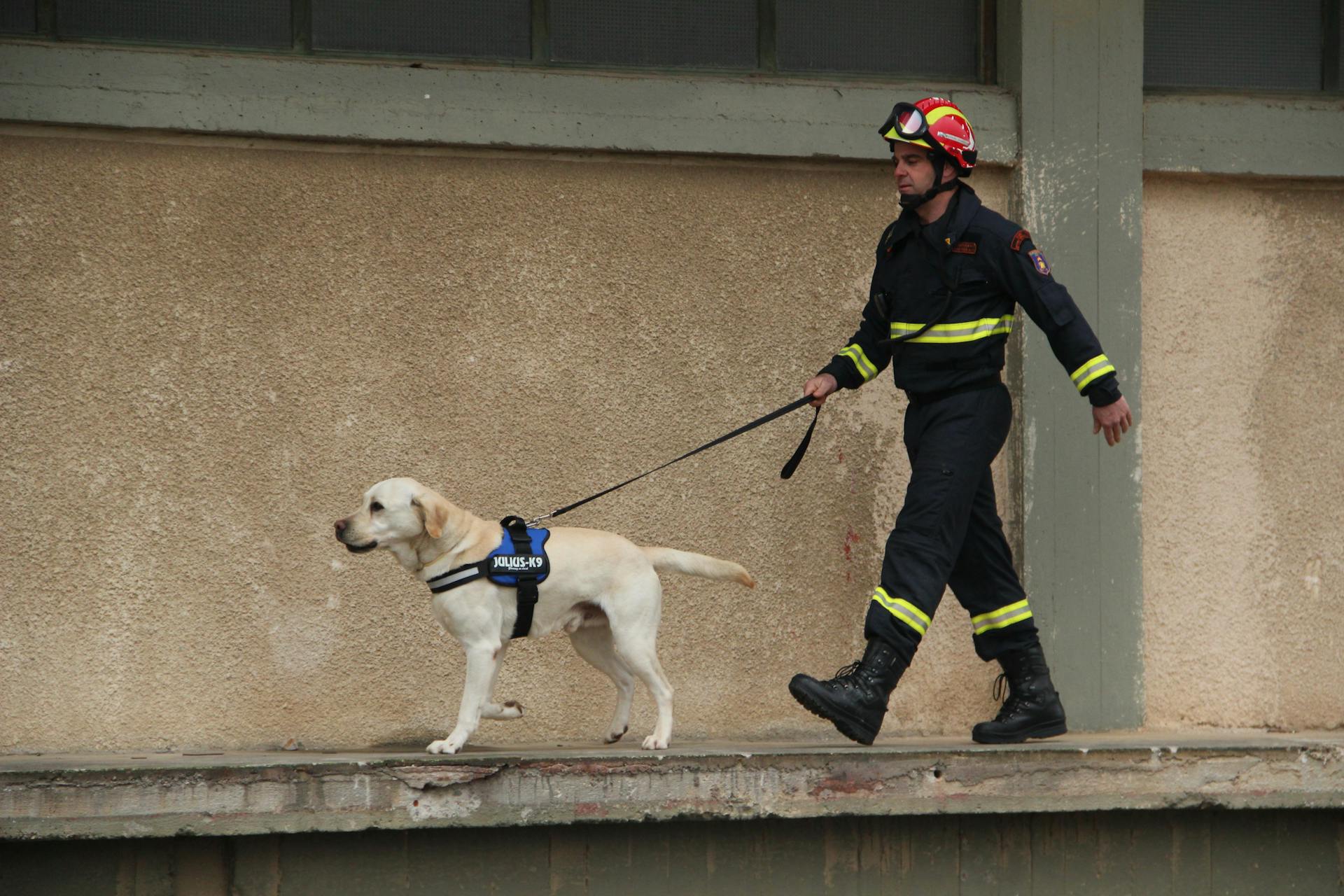
Dogs don't judge their handlers, accepting them as they are, which is especially important for individuals who struggle with trust issues. For example, veterans with PTSD may rely on their Service Dog to navigate difficult social situations.
Children with Autism often face bullying, harassment, and abuse, leading to a general distrust of other humans. However, they can trust Service Dogs, which can provide a sense of security and comfort in challenging situations.
A True Partnership
Dogs don't judge people as they are, making them a perfect companion for those who struggle with trust issues.
Their genuine affection is a key factor in forming a unique bond with their handler.
For example, veterans with PTSD can rely on their Service Dog to steer them through difficult social situations.
These dogs provide a sense of comfort and security that's hard to find in other humans.
Children with Autism can also benefit from the trust they have in their Service Dogs, which can be a rare feeling in their lives.
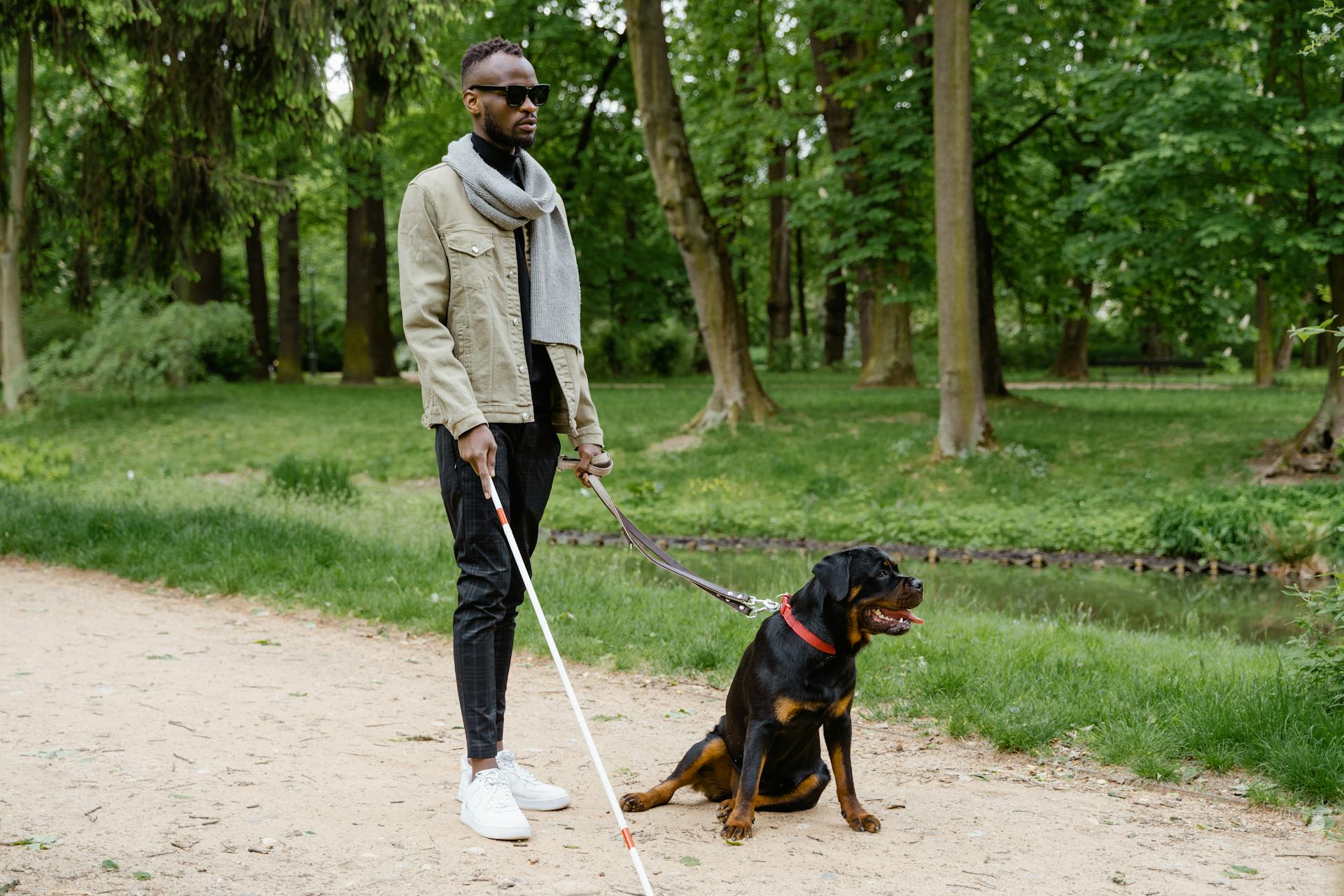
Many children with Autism are subjected to bullying and harassment, leading to a general distrust of other humans.
But with a Service Dog by their side, they can feel more at ease in social situations.
The authenticity of a Service Dog's affection is what makes this partnership so special.
It's a relationship built on trust, acceptance, and love, which is hard to find in other relationships.
For people with Autism, being misunderstood and misrepresented can be frustrating and alienating, making interactions with other people challenging.
But with a Service Dog, they can trust and rely on their companion to help them navigate these situations.
For another approach, see: Dog Training for Autism Therapy Dogs
About
Service dogs are expertly trained in physical tasks to help their handler navigate the world.
Their powerful relationship often leads to increased independence, self-esteem, and inclusion for a person with a disability.
Canine Companions service dogs are specially matched and provided at no cost to clients.
This unique relationship between a service dog and their handler can be life-changing, providing people with the support they need to live independently and confidently.
Science and Technology
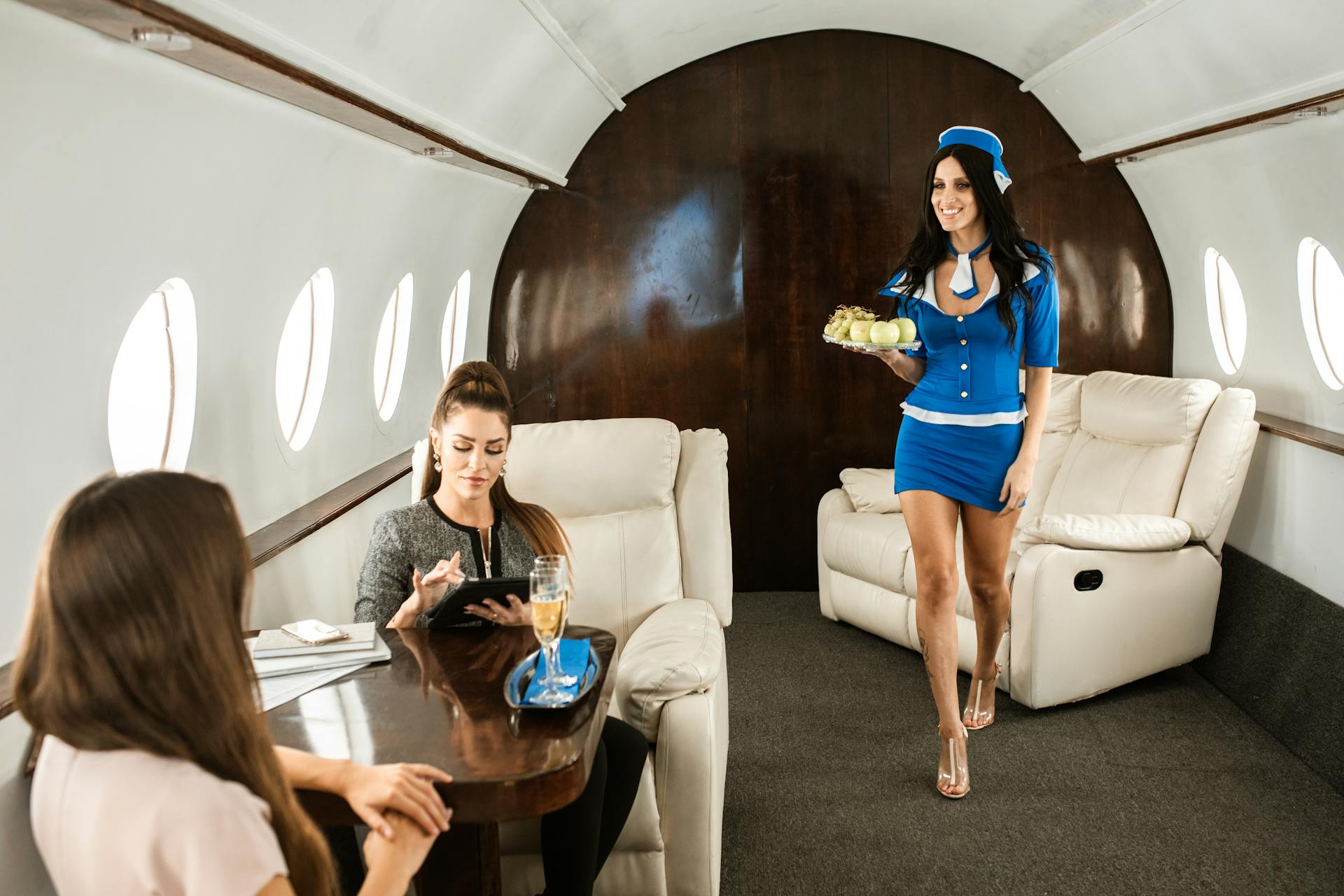
At Canine Companions, we take pride in being at the forefront of research in the field of service dogs.
We're constantly exploring new ways to improve the health and cognition of our canine companions, including research in genetics.
Service dogs undergo rigorous training to learn essential skills, such as navigation and assistance.
Training methods are continually evolving to better suit the needs of our canine companions and the individuals they serve.
Our team is dedicated to staying up-to-date on the latest advancements in canine health and cognition research.
By pushing the boundaries of what's possible, we're able to provide more effective and life-changing service dogs to those who need them.
Worth a look: Coton De Tulear Health Problems
Frequently Asked Questions
What breeds do canine companions use as service dogs?
Canine Companions primarily uses Labrador Retrievers and Golden Retrievers, as well as their crosses, in their service dog program. These breeds are carefully selected or donated from qualified sources to ensure exceptional temperament and ability.
Is a companion dog the same as a service dog?
A companion dog is not the same as a service dog, as it provides emotional comfort rather than specific tasks to assist a person with a disability. To be considered a service dog, the animal must be individually trained to perform specific work or tasks.
What is a canine companion?
A canine companion is a helpful dog that provides emotional support, therapy, or assistance to its human partner. These dogs are often referred to as emotional support dogs, therapy dogs, or Service Dogs.
Sources
- https://canine.org/service-dogs/
- https://canine.org/about/faqs/
- https://www.bswhealth.com/about/community-impact/community-outreach-programs/canine-companions
- https://thesavvysitter.org/blog/canine-companions-a-service-dog-training-center
- https://www.ecad1.org/index.php/resources/blog/200-service-dogs-are-loyal-canine-companions
Featured Images: pexels.com
